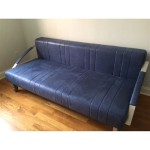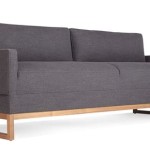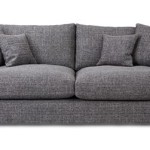Saggy Sofa Solutions: Restoring Comfort and Extending Lifespan
A saggy sofa is a common problem, often arising after years of use. It detracts from the aesthetic appeal of a living space and, more importantly, compromises comfort and support. Addressing the issue promptly is crucial for maintaining the functionality and extending the lifespan of this essential piece of furniture. Several factors contribute to sofa sagging, and various solutions exist, ranging from simple DIY fixes to professional upholstery services.
Understanding the underlying cause is paramount in selecting the most effective remedy. Common culprits include weakened or broken springs, compressed or deteriorated foam and filling materials, and a compromised frame. A thorough inspection of the sofa is therefore the first step towards addressing the problem effectively. Ignoring a saggy sofa can lead to further damage and potentially necessitate costly replacements in the long run. Proactive measures and timely repairs are therefore beneficial from both comfort and financial perspectives.
Identifying the Cause of Sofa Sagging
Determining the root cause of a saggy sofa is essential before attempting any repairs. The construction of a sofa is relatively complex, involving multiple components that can contribute to the issue. A comprehensive assessment helps identify the specific areas requiring attention and allows for targeted solutions.
One of the primary causes of sofa sagging is the wear and tear on the spring system. Sofas typically utilize either coil springs or sinuous springs. Coil springs are individual springs connected by wire, while sinuous springs are curved metal wires that run horizontally across the frame. Over time, these springs can weaken, stretch, or even break, leading to a noticeable dip in the seating area. Furthermore, the clips or ties that secure the springs to the frame can loosen or break, further compromising their support.
Another significant factor is the condition of the foam and filling materials. Sofas are typically filled with a combination of foam, batting, and fibers, such as polyester or down. These materials provide cushioning and support. However, with prolonged use, they can compress, lose their resilience, and break down. This compression results in reduced cushioning and a sagging appearance. The quality of the foam also plays a crucial role. Lower-density foams tend to degrade more quickly than higher-density options.
The sofa frame itself can also be a contributing factor. Frames are typically constructed from wood or metal. Over time, wooden frames can weaken, crack, or warp, especially under consistent weight and pressure. Metal frames, while generally more durable, can still bend or become distorted. A compromised frame provides inadequate support for the springs and cushions, leading to sagging.
Finally, the fabric or upholstery can contribute to a saggy appearance, although it's rarely the primary cause. Loose or stretched fabric can exacerbate the visual effect of sagging, even if the underlying structure is relatively sound. This is especially true for fabrics that lack resilience or have a loose weave.
DIY Solutions for Minor Sofa Sagging
For sofas with minor sagging issues, several do-it-yourself solutions can provide temporary relief and improve comfort. These solutions are generally less expensive and require minimal technical expertise. However, they are typically best suited for addressing superficial sagging or providing temporary support.
One of the simplest and most common DIY solutions involves adding support underneath the cushions. This can be achieved by inserting plywood sheets, cardboard, or even thick blankets between the cushions and the sofa frame. These materials provide a solid surface that distributes weight more evenly, preventing the cushions from sinking into the frame. The thickness and size of the chosen material should be carefully selected to match the dimensions of the sofa and the severity of the sag.
Another approach involves replacing or supplementing the existing filling materials. If the foam or batting in the cushions is compressed or deteriorated, it can be replaced with new materials. Foam can be purchased in various densities and thicknesses from fabric stores or online retailers. Batting, often made from polyester fibers, can be added to increase the plushness and support of the cushions. To replace filling, carefully remove the cushion covers, extract the old filling, and insert the new materials. Ensure that the new filling is properly distributed and shaped to maintain the original form of the cushion.
Adjusting the placement of cushions can also provide temporary relief. Regularly rotating and fluffing the cushions can help redistribute the filling and prevent localized compression. Switching the cushions around, so that those in high-use areas are swapped with those in less-used areas, can also equalize wear and tear. This simple practice can extend the lifespan of the cushions and improve their overall support.
Tightening loose fabric can also improve the appearance of a saggy sofa. If the upholstery is loose or wrinkled, it can be tightened using upholstery staples or tacks. Carefully stretch the fabric taut and secure it to the frame. This can create a smoother, more streamlined appearance and provide a slightly firmer seating surface. However, caution should be exercised to avoid damaging the fabric or the frame during the tightening process.
Finally, strategically placed throw pillows can provide added support and camouflage sagging areas. Throw pillows can be placed in areas where the sofa is sagging to provide extra cushioning and visual distraction. Choose pillows that complement the sofa's color and style to create a cohesive and aesthetically pleasing look.
Professional Solutions for Extensive Sofa Sagging
When DIY solutions prove inadequate, or when the sagging is caused by significant structural damage, professional upholstery services are often the best option. Professional upholsterers possess the expertise, tools, and materials necessary to address complex sofa issues and restore the furniture to its original condition. While professional services are generally more expensive than DIY fixes, they offer a more comprehensive and long-lasting solution.
One of the primary services offered by professional upholsterers is spring repair or replacement. If the sofa's springs are broken, weakened, or detached, a professional can repair or replace them. This may involve re-tying the springs, replacing broken springs with new ones, or installing additional springs to provide enhanced support. Professional upholsterers have the knowledge and experience to properly tension and secure the springs, ensuring optimal performance and durability.
Another common service is foam and filling replacement. Professional upholsterers have access to a wide range of high-quality foam and filling materials. They can assess the condition of the existing materials and recommend the most appropriate replacements. This may involve using high-density foam, memory foam, or a combination of different materials to achieve the desired level of comfort and support. The upholsterer will also ensure that the new filling is properly shaped and distributed to maintain the original form and appearance of the cushions.
Frame repair is another critical service that professional upholsterers provide. If the sofa frame is cracked, warped, or otherwise damaged, a professional can repair or reinforce it. This may involve replacing damaged sections of wood, adding bracing to strengthen the frame, or welding metal frames. A properly repaired frame provides a solid foundation for the springs and cushions, ensuring long-term stability and preventing further sagging.
Re-upholstering the sofa is a more extensive but often necessary solution for sofas with significant sagging and wear. Re-upholstering involves removing the old fabric and replacing it with new fabric. This process allows for a complete transformation of the sofa's appearance and provides an opportunity to address underlying structural issues. A professional upholsterer can help select the most appropriate fabric based on durability, style, and budget. They will also ensure that the new fabric is properly measured, cut, and sewn to create a seamless and professional finish.
In some cases, a combination of these services may be required to fully address the sagging issue and restore the sofa to its original condition. A professional upholsterer can assess the specific needs of the sofa and recommend the most effective course of action. They will also provide a detailed estimate of the cost and timeline for the repairs.
Ultimately, the decision to pursue DIY solutions or professional services depends on the severity of the sagging, the complexity of the underlying issues, and the individual's budget and skill level. Careful consideration of these factors is essential for achieving the desired results and extending the lifespan of the sofa. Regular maintenance, such as rotating cushions and avoiding excessive weight on specific areas, can also help prevent future sagging and prolong the life of the furniture.

Easy Inexpensive Saggy Couch Solutions Diy Makeover Love Of Family Home

Easy Inexpensive Saggy Couch Solutions Diy Makeover Love Of Family Home

How To Stuff Saggy Couch Cushions Under 50 Thetarnishedjewelblog Diy Cover Slipcovers For Chairs

Easy Inexpensive Saggy Couch Solutions Diy Makeover Love Of Family Home

4 Ways To Fix Sagging Sofa Cushions Wikihow

30 Solutions To Expensive Problems

Easy Inexpensive Saggy Couch Solutions Diy Makeover Love Of Family Home

Easy And Creative Ways Fix An Old Sofa Remodelaholic

3 Ways To Fix A Sagging Couch Or Sofa Simple And Easy Diy Springs Foam Supports

How To Fix Sagging Couch Cushions Thistlewood Farm








